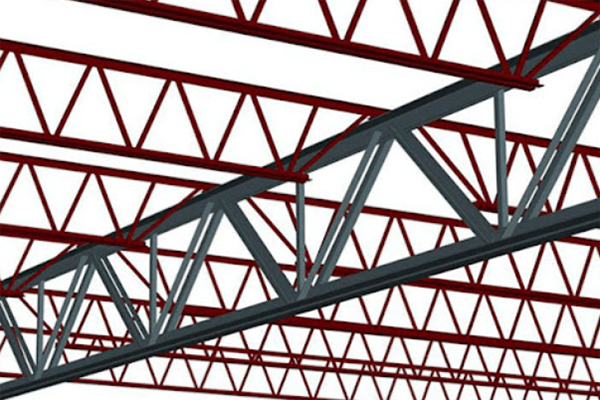In the realm of construction, trusses are essential structural components used to support roofs, bridges, and other structures. One critical element in the fabrication of trusses is the angle iron, known for its strength, versatility, and ease of use. But what size angle iron is ideal for trusses? This article explores the factors influencing the choice of angle iron size and guides on selecting the appropriate dimensions for various applications.
Understanding Angle Iron Trusses
Angle iron trusses are composed of L-shaped steel sections that form the primary framework of the truss. These components are crucial in ensuring the structural integrity and load-bearing capacity of the truss system. The size of the angle iron directly impacts the strength and stability of the truss, making it vital to choose the correct dimensions.
Factors Influencing Angle Iron Size
- Load Requirements: The primary consideration when selecting angle iron size is the load the truss will need to support. This includes both the live load (temporary weight such as people, furniture, or snow) and the dead load (permanent weight such as the structure itself). Engineers must calculate these loads to determine the appropriate angle iron size.
- Span Length: The distance between supports or the span length of the truss is another critical factor. Longer spans generally require larger or more robust angle irons to prevent sagging and ensure stability.
- Design Specifications: Architectural and engineering designs often specify particular sizes and types of angle iron to meet aesthetic and structural requirements. These specifications are based on detailed calculations and industry standards.
- Material Quality: The grade and quality of the steel used in angle irons also play a significant role. Higher-grade steels can support greater loads, allowing for smaller dimensions without compromising strength.
Common Sizes of Angle Iron for Trusses
While the specific size of angle iron required can vary based on the above factors, some commonly used sizes include:
- 1.5” x 1.5” x 1/8”: Suitable for lighter loads and shorter spans, this size is often used in smaller residential projects or interior truss applications where the load is minimal.
- 2” x 2” x 1/4”: This medium-sized angle iron is a versatile option for moderate loads and spans. It is commonly used in both residential and commercial applications, providing a good balance of strength and weight.
- 3” x 3” x 1/4”: For larger projects with significant load requirements, this size offers enhanced strength and stability. It is frequently used in industrial settings or for larger commercial structures.
- 4” x 4” x 3/8”: This heavy-duty angle iron is used for substantial loads and long spans, such as in bridge trusses or large-scale industrial buildings. Its robust design ensures maximum load-bearing capacity and structural integrity.
Practical Applications
- Residential Construction: In home building, angle iron trusses are often used for roof structures. The appropriate size typically ranges from 1.5” x 1.5” x 1/8” to 2” x 2” x 1/4”, depending on the size and style of the home.
- Commercial Buildings: For commercial properties, such as offices or retail spaces, the angle iron size might increase to 2” x 2” x 1/4” or 3” x 3” x 1/4”, offering additional support for larger roofs and spans.
- Industrial Projects: Heavy industrial buildings, warehouses, and factories often require the largest angle irons, such as 3” x 3” x 1/4” or 4” x 4” x 3/8”, to support heavy machinery, equipment, and extensive roofing systems.
Conclusion
Selecting the right size angle iron for trusses is a critical decision that impacts the safety, durability, and performance of a structure. By considering factors such as load requirements, span length, design specifications, and material quality, builders and engineers can choose the appropriate size to ensure structural integrity. Whether for residential, commercial, or industrial applications, understanding these key elements helps in making informed choices that lead to successful and safe construction projects.
In conclusion, while there is no one-size-fits-all answer, common sizes like 2” x 2” x 1/4” and 3” x 3” x 1/4” serve as versatile options for many projects. Always consult with a structural engineer to determine the best size for your specific application.
Post time: Aug-06-2024




